When you’re constantly writing about perfume, when you’re always testing something and have to concentrate on every nuance, every flickering whisper, every change over hours and hours, the end result is that you often turn to something uncomplicated, happy and comforting as your own personal choice. Mine happens to be a bit of a guilty pleasure, a scent that a perfume snob would probably recoil from in horror and disdain. 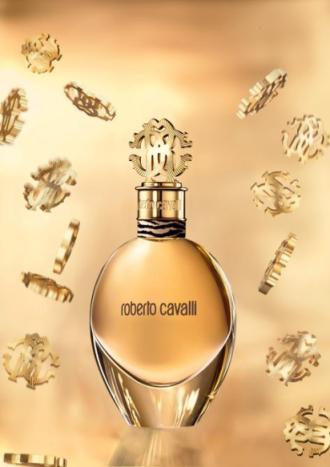 I simply don’t care. I’m coming out of the perfume closet with my absolute favorite embarrassing love: Roberto Cavalli Eau de Parfum, the signature scent of the Italian fashion designer, Roberto Cavalli.
I simply don’t care. I’m coming out of the perfume closet with my absolute favorite embarrassing love: Roberto Cavalli Eau de Parfum, the signature scent of the Italian fashion designer, Roberto Cavalli.
Roberto Cavalli Eau de Parfum (hereinafter “Roberto Cavalli”) came out in February 2012. Some months later, I stumbled upon it while browsing in Sephora. I sprayed it, blinked, sprayed more, and deeply inhaled with a faint moan. I went home and couldn’t stop sniffing my arm. A few days later, I went to Ulta and, there it was again, beckoning to me like some orange-blossom siren in a Roberto Cavalli silk dress. I resisted. (Just barely.) I went home, read a number of snotty reviews on it, but couldn’t stop thinking about the scent. A week later, I caved. That night, I positively doused myself in the perfume and announced on Facebook that I smelled so good, I …. Well, never mind what I said. Suffice it to say, it made me feel like a siren and a slithering panther, all in one. And that was before I watched the video!
Roberto Cavalli is classified as floral oriental on Fragrantica, but I think it would be more accurate to call it a fruity-floral Oriental. The Cavalli website describes it as follows:
“A luminous and sexy print” – Roberto Cavalli.
The Roberto Cavalli perfume belongs to the ambery floral family. It is an exuberant and sunny fragrance whose top notes, lit by pink peppers, exude a genuine strength of character. Vibrant and sensual, it exhilarates and mesmerises from the very first contact.
At the heart of the Roberto Cavalli perfume one finds all the majesty of the absolute of orange blossom. It is a colour as much as a scent that reveals an ultra-feminine trail and leaves no-one indifferent.
This sensuality finally wraps itself into the captivating base notes of the tonka beans that leaves an appetizing imprint on the skin… essentially addictive.
Louise Turner, perfumer at Givaudan, created the Roberto Cavalli signature fragrance.
I’ve read some differing notes for the perfume. Fragrantica adds benzoin to the base and says the tonka bean is toasted. Macy’s, for some reason, adds Mirabelle plum in the base. So, the notes — to put it in a clearer form and as compiled — seem to be:
Top: Pink Peppercorn. Middle: Orange Blossom Absolute Bottom: Toasted Tonka Bean, Benzoin & Mirabelle Plum.
The only review I could find for Roberto Cavalli from a (primarily) perfume blog came from Angela at Now Smell This. She most definitely did not share my passion for the perfume which she calls Roberto Cavalli “For Her.” (A number of people and websites do call the perfume “For Her,” and I realise it can be quite confusing, but the name on Cavalli’s own website is simply “Roberto Cavalli.”) In a scathing review, she found the opening to be unoriginal but, still, it was okay: it was “juicy, fresh, and warm. This is the first impression that sells a thousand bottles.” And she loved the bottle — which is probably just as well for Roberto Cavalli since he spent a lot of money making a whole video to show it off.
But then came the bad part of her review:
After fifteen minutes comes the deal breaker: a wave of the nauseating, bug-spray woody musk that dominates way too many new releases often positioned as neo-chypres. It’s the one smell in perfume that gives me a headache. The woody musk is hard to describe, but if you’ve smelled it, you’ll know what I mean. It smells synthetic and stifling, like a mohair sweater sprayed with Raid and swathed in hot Saran wrap.
The comments to her post are almost entirely from people who haven’t smelled the perfume and who went on to have fun imagining a thousand different ways that this could have been a better fragrance. That’s perfectly fine. We all do it when reading a negative review. (And, honestly, who wouldn’t with a review like that quoted up above?!!) The thing is, months later, when people had actually smelled the perfume, a number of people wrote about how much they loved it.
And that love is shared on Fragrantica too, where the comments are overwhelmingly positive. (All the talk about it being “heavenly” and “falling in love” may explain why the perfume is frequently sold out on a number of different sites, as the details at the end of my post will show). On MakeupAlley, the 6 reviews are more mixed. Some find the scent to be very ’80s and dated, while others say that it is a lovely romantic scent that is reminiscent of Amarige but without the latter’s harshness. And a number detect something akin to tuberose, frangipani, sandalwood and/or amber.
I think all those comments are quite astute and correct to an extent — minus the NST bug spray comparison — but I would love Roberto Cavalli no matter what people said. It opens with a huge burst of African orange blossom. It’s massive, immediate, undeniable — and I adore it, especially in conjunction with the pink peppercorn that trails behind it like a handmaiden. There are strong undertones of peach, honeysuckle, tonka bean, musk, and something that smells like fake sandalwood. More subtle is the hint of plum that dances in the background. The orange blossom has, on different occasions, a light soapy aspect that always surprises me whenever it pops up. I shouldn’t like it, or even the occasionally synthetic note, but I do. (Probably because I don’t smell anything that Angela at NST did!)
Plus, the “synthetic” notes aren’t of the variety that I’m used to and normally recoil from. There is none of that extreme burning sensation or tightness in the bridge of my nose which is always a dead giveaway (to me) of synthetics and the precursor to an inevitable headache. This isn’t the same sort of sharply synthetic note that utterly felled me in Frederic Malle‘s Lipstick Rose and made me scrub it off less than two hours in, perfume review be damned. It’s not even the synthetic note which drove me to whimpering agony in Illuminum‘s White Gardenia Petals, in Montale‘s Aouds, or in my two extremely painful forays into the L’Artisan Parfumeur line. (If nothing else, those examples should show you that synthetics are not limited to mass-market brands!) No, in Roberto Cavalli, it’s something else which I can’t quite pinpoint, but which doesn’t seem very real.
And, yet, I don’t care one whit! There is a cocooning, enveloping warmth to the perfume that takes me to an orchid in a warm Mediterranean climate, like Sicily perhaps, where the air is heavy with the narcotically heady orange blossoms that I adore so much. The orchid is filled with peach trees that lie low to the ground, heavy and overburdened with ripened fruit that beg to be eaten. I take a bite and, as the juice dribbles down my chin, the sweetness is almost as thick as the honey I smell. It’s a swirl of intense orange blossom, peach and honey with spiced amber and musk. Up ahead, I see plums and honeysuckle trees, beckoning. I’m transported there on a wave of ambered sweetness, emanating from warmly toasted, roasted tonka beans, and sensuous musk. Yes, there may be a bug or two hovering amidst the musk, but it is only a microscopic gnat, barely visible in the shimmer of sensuality that hovers above my skin. Plus, it may be just my imagination after having read the NST review.
As time progresses there is a buttery feel to the flowers which envelop me. They are indolic and heady but, on me, never verging on sour, plastic-y, or rotting fruit. (See the Glossary for an explanation of indoles and how indolic scents can turn on some skin.) I can see how some may wonder if there is tuberose or amber in the fragrance; it certainly feels like it sometimes. There is also an exuberant, bouncy, sunny feel to the scent that explains the comparisons to the poor, much maligned, notorious Amarige, a floral powerhouse fragrance which has been pilloried in the court of public opinion. But Roberto Cavalli is much spicier, much warmer and much more ambered, especially in its dry-down. And it’s actually not as heady, powerful or rich as Amarige. I’m not quite sure how Angela at NST found this to be a twist on a modern chypre, as I think it’s pure floral oriental.
My perfume cocoon is huge at first, pulsating its way about two to three feet ahead of me, but its intensity lasts only for the first 30 minutes, before becoming more moderate for another three hours. (On Fragrantica, the sillage is categorized as “moderate,” too.) Around the third hour, Roberto Cavalli becomes much closer to the skin, but the perfume lasts like a silken sheath over my skin. Hours and hours later, my orchid walk is at an end. It was a very long walk — perhaps 9 hours all in all– with the remaining three hours being very simple ones. A quiet path of peach, orange, amber and vanilla benzoin.
Few perfumes are so consistently easy, uncomplicated, comforting and “happy” for me to wear. It requires little thought or effort. When I’m worn out by deducing notes in intellectually challenging works of art (like many Serge Lutens fragrances), when I’m tired of thinking about perfume and just want to wear the bloody thing, Roberto Cavalli is often what I reach for. I wouldn’t say that Roberto Cavalli is a scent that demonstrates the highest-quality pure oils or ingredients, but I simply don’t care. It is exuberant, energizing, happy, and lush. I particularly love to wear it at night, after a long day and a hot bath, when I’m comfy in my pajamas and about to vegetate before some television show that I’m too tired to really watch with any focus. And, yet, despite the coziness of such a scenario, Roberto Cavalli always makes me feel deeply sexy. It’s a scent that calls out for the sheerest of silks and satins, and seduction in the boudoir.
It is not, however, a scent for everyone. Those who prefer light, airy, clean or fresh scents should stay far, far away. This is far too rich, indolic and heady for them. For those who love complicated, more nuanced, more high-end luxury scents, this isn’t for you, either. In fact, ideally, you would ALL stay away from Roberto Cavalli, so that I can be the only woman in the world to smell like this. My guilty pleasure. All mine.
Do you have a secret, guilty pleasure perfume? If so, what do you love about it?
DETAILS:
Cost: The perfume is available in a variety of different sizes and prices. Roberto Cavalli comes in a 1.0 oz/30 ml bottle that costs $48 or £35.00, but which I’ve only seen available on the Robert Cavalli website, not in stores. It is also available in a 1.7 oz/50 ml bottle that costs $65 or £48.00. Finally, it comes in a 2.5 oz/75 ml bottle that costs $85, but that size may be limited only to the US website and US stores. There is also an accompanying body lotion and shower gel, if you’re interested. The Roberto Cavalli website is a bit tricky to navigate, so I’ve broken it down. The perfume section of the US website for Roberto Cavalli can be found here. The UK version is here. There are also about 40 different countries for which Roberto Cavalli has product information and pricing, and you can find that section of the website here.
Availability & Locations: In the US, the 1.7 oz size is available at Sephora, but it is currently (and very often) sold out on the website! Also sold out is the $22 roller-ball in a 0.2 oz size. It is available on the Saks Fifth Avenue, Nordstrom, Bloomingdale’s and Macy’s websites in both larger sizes (1.7 oz and 2.5 oz), along with some special gift box deal at the latter. I don’t know if it is available in all the actual stores, though. A reader just informed me that Nordstrom no longer carries the line in its brick-and-mortar sites, though it is listed on the website. The perfume is also no longer carried by Ulta or, at least, it’s not on its website. However, if all else fails, it seems to be carried on Amazon. In the UK, Roberto Cavalli is available at Debenhams and Harrods. In France, I found Roberto Cavalli listed on the Printemps website, but no indication as to whether that included the perfume along with the clothes. I couldn’t find it on Gallerie Lafayette, but Roberto Cavalli has his own stores in Paris and France which should carry it. In Australia, I found it listed on Adore Beauty where the prices start at AUD$80 for the smallest size (1.0z/30 ml), but all sizes and all accompanying products are completely sold out! For all other countries, you can turn to the Cavalli website.





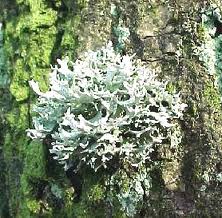


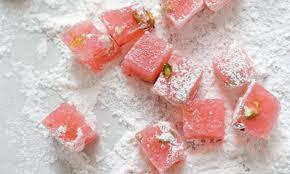



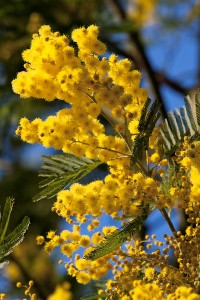
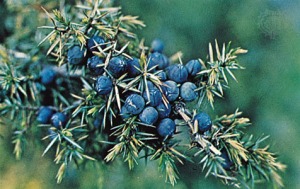
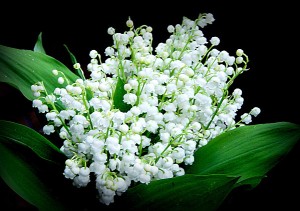
 about
about